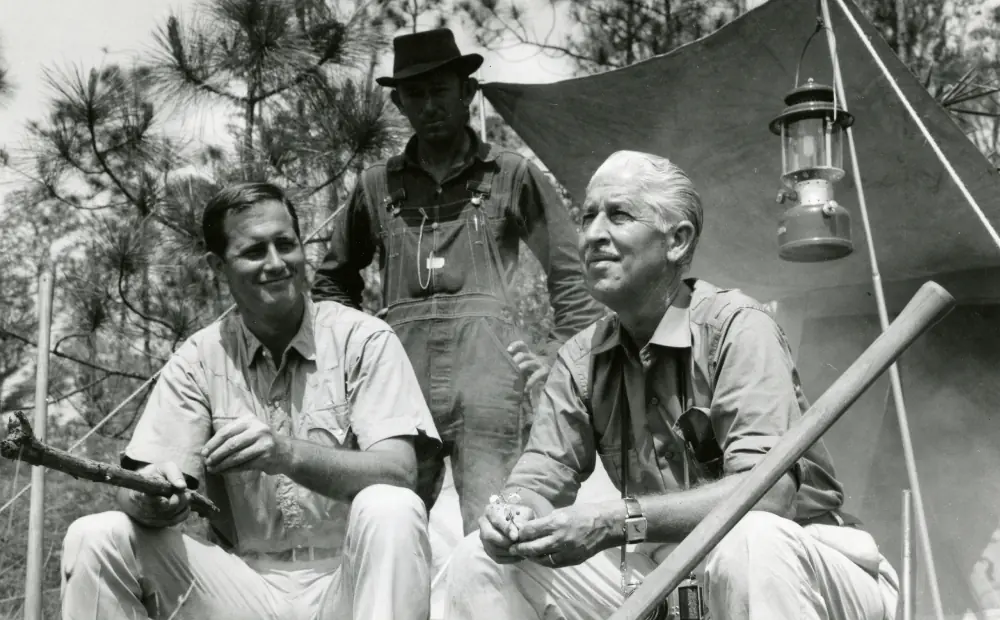0:06
In the steep bamboo forests of South Central China is one of the most remarkable creatures on earth.
0:16
The giant panda has been intertwined with Chinese culture for over 2000 years and was once the property of emperors.
0:29
This singular species has become a symbol of Wildlife Conservation worldwide.
0:37
They've been pushed out of the lowland areas of China and now only exist in a tiny sliver of their former range.
0:46
Only 2000 or less remain in the wild.
0:53
For years, China has used these beloved pandas for diplomacy, loaning them to zoos around the world.
1:02
China and the United States share a remarkable amount of cooperation in key areas like Wildlife Conservation.
1:09
Now there's renewed urgency to save the giant panda, and China has sent 2 new pandas to the San Diego Zoo in Southern California.
1:21
And as a bear ecologist myself, I just can't wait to learn more about these amazing animals.
1:31
So who's over here?
1:33
So over here we have Shinbao.
1:37
Giant pandas are absolutely dependent on bamboo for their survival.
1:42
They eat about 40 lbs of bamboo a day.
1:45
You'll start to see all these different ways they process different parts of the bamboo.
1:49
They get different nutrition from different parts.
1:52
One of the other things that is really setting pandas apart from other bears in terms of their Physiology are those thumbs.
2:01
Yes.
2:01
Wow.
2:02
Yeah.
2:03
I mean, it makes me think of like, like a gorilla, right?
2:05
Like a primate almost.
2:06
They're not opposable thumbs.
2:08
They're, we call them pseudo thumbs, you know, which means sort of a fake thumb.
2:12
And it's actually an extension of their wrist bone.
2:15
And what it does is it allows them to hold bamboo in a way they couldn't if they didn't have that.
2:22
I can't help but notice those strong fangs that she's got.
2:27
Giant pandas we think of as these cute, cuddly, you know, docile bears.
2:31
But they are bears.
2:33
They are absolutely bears.
2:34
They actually have the strongest bite force of any of the bears, which I think is really shocking to people.
2:40
But if you look at some of the, you know, the thicker pieces of bamboo, and sometimes they're 3 inches across, and a giant panda can just bite through that like it's butter.
2:51
The San Diego Zoo has a history with pandas.
2:54
They received their first pair from China in 1996.
2:59
In fact, they're the first zoo in America to successfully raise panda Cubs.
3:06
One of the most spectacular things I've witnessed in my time here is that when a panda cub is born, they're pink with just the littlest bit of white fur.
3:14
They look a lot like a rat, I hate to say, you know, about the size of a stick of butter.
3:19
And then about two weeks into their development, they start getting black patches where their black fur will come in, and it's just amazing.
3:29
The San Diego Zoo also pioneered new techniques, like creating a new milk formula to help newborn Cubs thrive in human care.
3:43
There's this beautiful history of giant pandas here at the San Diego Zoo.
3:47
What is your ultimate hope for them here?
3:48
So my hope over the next 10 years is that we make meaningful contributions to the continued conservation of giant pandas, as well as inspire the next generation of conservation professionals.
3:59
Well, it's worked for me, that's for sure.
4:01
I mean, just watching them has made me a panda believer.
4:05
Yes, it's, it's hard to resist.
4:07
They are so, so charismatic.












